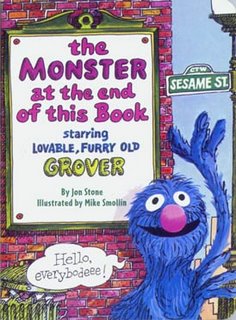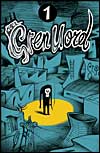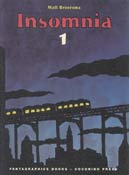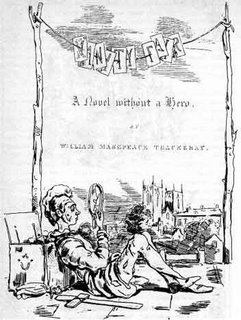Manstealing for Fat Girls.
Let's talk, at long last, about rainbow parties.
In 2004, while giving a presentation at a sex toy party for a women's group in a tony northern suburb, the attendees grilled me pretty hard on what the young ladies are doing these days. Are they, like Oprah says, tossing salads in study hall and running cherry red lipstick over their puckers before lining up to give blowjobs in the bathroom?
My answer then, as now, is no. In contrast to the media presentation of teen girls turning tricks for spending money or servicing the football team as an eager doormat, the reality is that most teenage girls are busily balancing their self-respect with self-exploration, just like they've always been doing. Teenage girls are just as likely to recieve oral sex as to give it, and the majority of teens are delaying vaginal intercourse, citing fears of pregnancy and STDs. Of course, every high school in the nation nowadays has students that threw a rainbow party, just like every high school in past generations had a female student that had to be "rushed to the hospital" with a broken-off hot dog that got stuck in her vagina.
What's different about kids today is they live in a world with high speed internet access and 24-hour cable news networks that hysterically grasp and claw for a story, any story, that they can spash across the television screen and rake in high ratings and higher advertising dollars by rumormongering and salacious slut-bashing with bits of gossip best left, like the hotdog girl, on the playground.
To be sure, there's considerably more pressure on teenage girls to behave a certain way - with the abstinence-only crowd on one side feeding them false information or no information about normal sexual development, STD prevention, and birth control options, and the internet on the other side, ready to show them the darkest, most miserable side of sexuality before they've have a chance to engage in more wholesome, egalitarian sexual pursuits.
Most teenagers are good kids, and unless a girl is raised with the expectation that she's to become a total whore, most girls have a pretty solid line they will refuse to cross. It's insulting to young women to suggest that they are so mindless they will, for popularity's sake, publicly fellate any boy who asks. However, the constant media attention given to rainbow parties and girls going wild can give the average teenager, who obviously are not comfortable talking about such explicit sexual practices with their parents, doubts about what's really going on and what's expected of them.
A teenage reviewer of the now-notorious Rainbow Party writes on Amazon:
No girl--not one that's out of her mind drunk(and NONE who are otherwise stoned) would "service" various guys to the extent that they'll leave bright rainbow rings around the base of...just NO. Stupid and demeaning and presents the libido of girls as whorish. Nice stuff for pre-teens, hmmm? No.
To this young reader I would strongly recommend picking up a copy of Michelle Embree's debut novel Manstealing for Fat Girls instead. With the notable exeption of racial issues, the dilemmas teenage girls face - sex, drugs, peer pressure, appearance, class issues, homophobia, bullying, and gender relations are all represented, but in a more realistic, less sensationalized manner, and with no cheap moralizing and overly-simplistic solutions.
Sixteen-year-old Angie, nicknamed "Lezzylard" by her abusive classmates, her best friend Shelby, who is the school's only out lesbian, and their friend Heather, whose right breast didn't develop properly, must navigate the cruelties of high school and the unpleasantness of their unsettled homelives in a blue collar suburb of St. Louis, Missouri. Angie spends the fall semester of her sophomore year having an epiphany of sorts - the kind that results when you get tired of being tired. Bullied and insulted in the school bathroom by popular girl Mindy Overton, Angie fights back, asking Mindy, "Why don't you just throw up your fucking breakfast and eat a bag of shit already?"
Now that the gauntlet has been thrown down, a war breaks out between the working class kids and the wealthy, popular kids, with enough characters floating back and forth between the two groups just enough to mix things up. Angie, with her worries about her mother's sub-standard boyfriend, her weight, her schoolwork, boys, and her friends jockying for priority in her mind, gives the reader the familiar feeling that she's lived Angie's life on at least some level.
Where Embree really shines, however, is with her depiction of Robyn, Shelby's violent and unstable older sister. Robyn, whose personality is akin to a live minefield, spends most of the novel terroring the younger kids. Then, without deviating an inch from her unpredictable rabid wombat persona, she shines so powerfully and brightly with such a dead-on portrayal of big sister heroism that she alone makes reading the book worthwhile.
While it is doubtful that Manstealing for Fat Girls is a book that mothers will buy for their daughters in the hopes of teaching them a valuable lesson, (the lessons of morality, sexual self esteem, and drug avoidance are there, but not broad or hamfisted enough to be an afterschool special) it is definitely a book that girls will find on their own and pass around in their circle of friends.
________________________
Manstealing for Fat Girls
by Michelle Embree
Soft Skull Press
published in 2005
Soft cover
256 pages
1-933368-02-0











